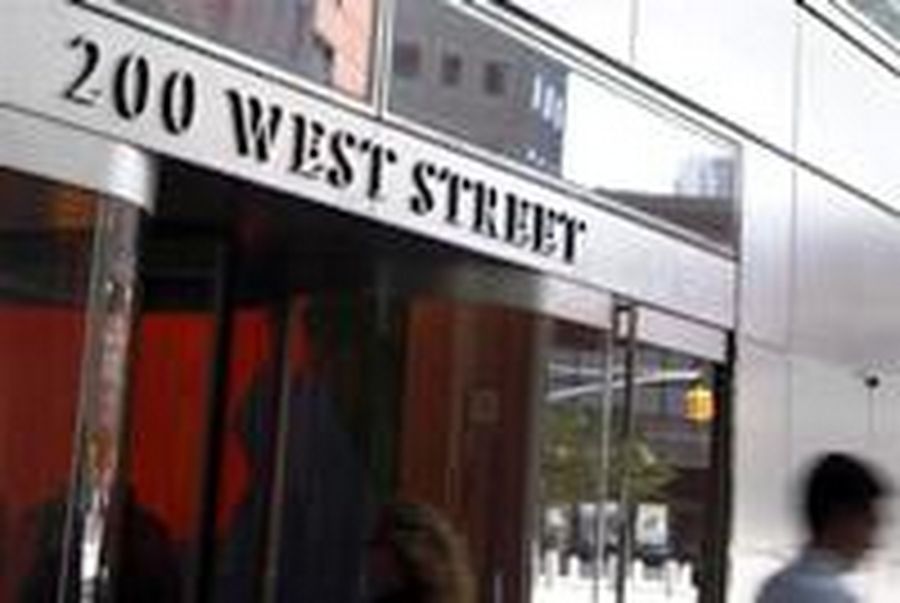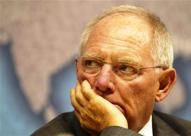
IFR Editor-at-large Keith Mullin
So JP Morgan, Citigroup, Goldman Sachs and Merrill Lynch have reported third-quarter numbers. What conclusions can be drawn from the data? Well, the first, self-evidently and predictably, is that the industry had a lousy quarter and is likely to suffer a pretty dreadful fourth quarter, too.
My second conclusion is that I need to ask Matthew Davies, an affable and friendly chap … [no, really] … and Editor of IFR to dig deep and fund a research team that I can set about equalising the numbers and working backwards through all of the countless and arcanely-worded notes to the accounts in order to give me half a chance of comparing like for like in the earnings statements and financial supplements.
To achieve a level playing field, I spent ages deducting Goldman’s investment management numbers as well as BofA’s treasury services number because none of the others includes it in its IB results (well not visibly anyway); I wasn’t quite sure what to do with Citi or BofA’s lending revenues because JPM doesn’t report this as a separate revenue line; I melded the debt and equity results of GS’s Institutional Client Services and Investing & Lending divisions because no-one else breaks out their securities business like this, but put the ICBC result into that amorphous “other line” that banks like so much. I could go on. It’s a nightmare. Maybe I should just leave it all to the bank analysts, but I’m not sure how many bother.
So if trying to figure out and account for the specific product-line differences between the units that house each bank’s investment banking business is hard enough, just when you think you’ve got somewhere, the banks hit you with that DVA/CVA accounting nonsense that’s made most of the headlines so far. To be fair, this isn’t new but in the current credit environment, the size of the adjustments for own-debt and counterparty credit spread widening, in the wake of dramatic real-business reversals, made more of a difference than certainly I had expected.
Well telegraphed
Goldman’s loss for the quarter was pretty well telegraphed so should have caused little anxiety when the firm duly announced a net loss of US$393m on net revenues that at US$3.6bn were down 51% quarter-on-quarter and 60% from last year’s third quarter. The net loss in Bank of America’s Global Banking & Markets division wasn’t as widely discussed or expected, but the song remained the same as elsewhere: the US$302m negative GB&M number came off a 26% reduction in revenue to US$5.2bn due to lower sales and trading revenue and investment banking fees. To be honest, it doesn’t get more sinister than that for the whole industry.
The make-up of the ECM underwriters league table in the third quarter offers another sign of the times: there were eight Chinese securities firms in the top 25.
Look at the evidence: worldwide M&A for the third quarter of US$566bn was 21% off the year-ago same quarter; DCM was 24% down at US$918bn, but it was ECM that most closely exemplified today’s troubled times. The collapse of the IPO market (ex-China) and secondary market volatility caused a 70% decline in year-on-year third-quarter volumes to a little under US$105bn, compared to US$346bn in the year-ago period. That’s pretty disconcerting.
If you’re not in the top 10 in a market like this, management must surely be thinking twice about the cost of keeping ECM origination going in its current form, not to mention the equity research, sales and trading you need to underpin it. If your timing for economic recovery, a return of confidence and sentiment and therefore deal activity is the back end of 2012 or even 2013, that’s an awfully long time for the cupboard to be bare. Only 17 firms got over the US$1bn ECM underwriting line in third-quarter 2011, while last year’s 25th-ranked firm underwrote over US$2bn.

People walk past the entrance to the Goldman Sachs building at 200 West Street, New York June 2, 2011. Goldman Sachs Group posted its second quarterly loss as a public company on Tuesday as its investment portfolio lost billions of dollars in value. (REUTERS/Shannon Stapleton)
The make-up of the ECM underwriters league table in the third quarter offers another sign of the times: there were eight Chinese securities firms in the top 25. Guosen Securities made it all the way to number nine, while Citic, Ping An Securities, China Securities Co, and Bank of China were all top 15. CICC, Guotai Junan Securities and GF Securities also made a showing. In last year’s third-quarter, there were six Chinese firms in the top 25. But here’s the difference: this year Chinese firms garnered a 12.5% share of global ECM underwriting volumes as China kept cranking out mega-IPOs, while the rest of the world retreated into abeyance. Chinese firms only underwrote 5.1% in last year’s third-quarter.
Fees decline
In light of the collapse in deal flow, the concomitant reduction in fees was all too predictable: JP Morgan and Citigroup both down 61% from second-quarter to third-quarter, Goldman down 76%, with Merrill outperforming by only falling 21%. Goldman had already had a lousy second quarter; its US$90m of Q3 equity underwriting revenues (down from US$378m in the second-quarter and US$310m in the third-quarter of last year) were pitiful for a firm that still considers ECM to be one of its marquee products. The firm starkly underperformed its peers — US$296m from Merrill, and US$178m from JPM (Citi also underwhelmed with ECM revenues of US$106m).
On the debt side, the make-up of the top 25 league table was unremarkable in terms of the leading firms but the number of deals Q3-to-Q3 halved. BarCap topped the third-quarter global DCM table in 2010 with US$116bn of credit; Deutsche Bank was at the helm of this year’s Q3 DCM table but with credit of less than US$65bn. In terms of debt underwriting revenues, Citi was the outperformer (-27.5%) but again Goldman took the wooden spoon with a 61% decline. But more to the point it is losing touch with the other three early reporters in terms of the quantum of revenues it generates from DCM.
GS’s US$168m in debt underwriting fees compared miserably with the other three, which all came in close to three times that number (Citi US$446m; Merrill US$479m and JP Morgan US$496m). GS maintained its pole position in M&A in revenue generation, which was a key positive takeaway. If you disaggregate the firm’s ICS and I&L numbers, its equity trading numbers on the client side were pretty robust at US$2.3bn; they were certainly way ahead of the numbers reported by the other three firms (although again it’s impossible to know what’s in the numbers reported by the others).
Generally, the trading businesses took it on the chin for another quarter, with significant revenue declines (more or less bad depending on whether you can be bothered to adjust for DVA/CVA), but volumes have been off for months and I don’t expect them to come anywhere close to where they had been, pending resolution of the interminable Greece saga, the unfinished issue of sovereign debt ringfencing, leveraging the EFSF, the fragility of European sovereign ratings, and the issues of bank recapitalisation and deleveraging.
EZ mess
Which brings me neatly to the latest chapter in the sorry EZ mess. I never cease to be amazed by markets, or more specifically the market professionals behind them. So markets go up when Sarko-Merkel blather on about having the magic ingredient to save the world (which they don’t and never did), go up again when G20 finance ministers and central bank governors nod vigorously, mock-intelligently and slightly more in unison in Paris in agreeing there’s even a problem … [deep sigh of incredulity] … and yet again when a bunch of Eurocrats tell us Greece will be ring-fenced and that there will be no contagion.
Can people — who by the way are managing my and your money — really be so naïve that they buy when Merkel smiles and sell when she frowns?
But then they go down when German finance minister Wolfgang Schauble says there will be no magic solution coming out of the meeting of EU leaders. And that Greek haircuts will be greater than 21%. I read various reports over the past day or so that attributed falls in stock prices and the euro to Schauble “dashing hopes” of any progress in sorting out the debt crisis. Really?
Who on earth are these people whose hopes were so egregiously dashed? Can people — who by the way are managing my and your money — really be so naïve that they buy when Merkel smiles and sell when she frowns? I’d like to think not but the volatility of the post-summer period suggests otherwise. [Problem is: you never know if a politician smiling is a positive signal or a darkly negative one]
The latest plan, to be agreed, discussed, announced or whatever at the EU leaders summit in a few days, is to use the EFSF to provide first-loss guarantees on the first 20%-30% of peripheral debt issuance in a bid to entice investors to give issuers a route back to the primary capital markets. Other than the fact that the Germans had always said the EFSF wouldn’t be leveraged, and that they’ve clearly changed their mind in the face of having no other options, that idea has been around for ages.
The EU leak machine suggests that this is “the big idea” although officials also claim other proposals are also under discussion (let’s see). Otherwise, EU officials like the tripartite idea for the banks that will see a much tougher capital adequacy framework, a statutory buffer for banks with significant exposures to sovereign debt, plus assured access to term funding, if necessary by means of state guarantees.
Nothing new in any of this. And that’s the problem: all of the issues have been discussed, discussed again, componentised, recomponentised, decomponentised again and so on. If the hope is by taking apart a clapped out Trabant, you’ll end up with a special edition Maybach by putting it back together differently, it ain’t going to happen.Call me a cynic but I’m not holding my breath ahead of the forthcoming summit. I’m even starting to depress myself, and we’ve still got a bunch of bank results to come.


